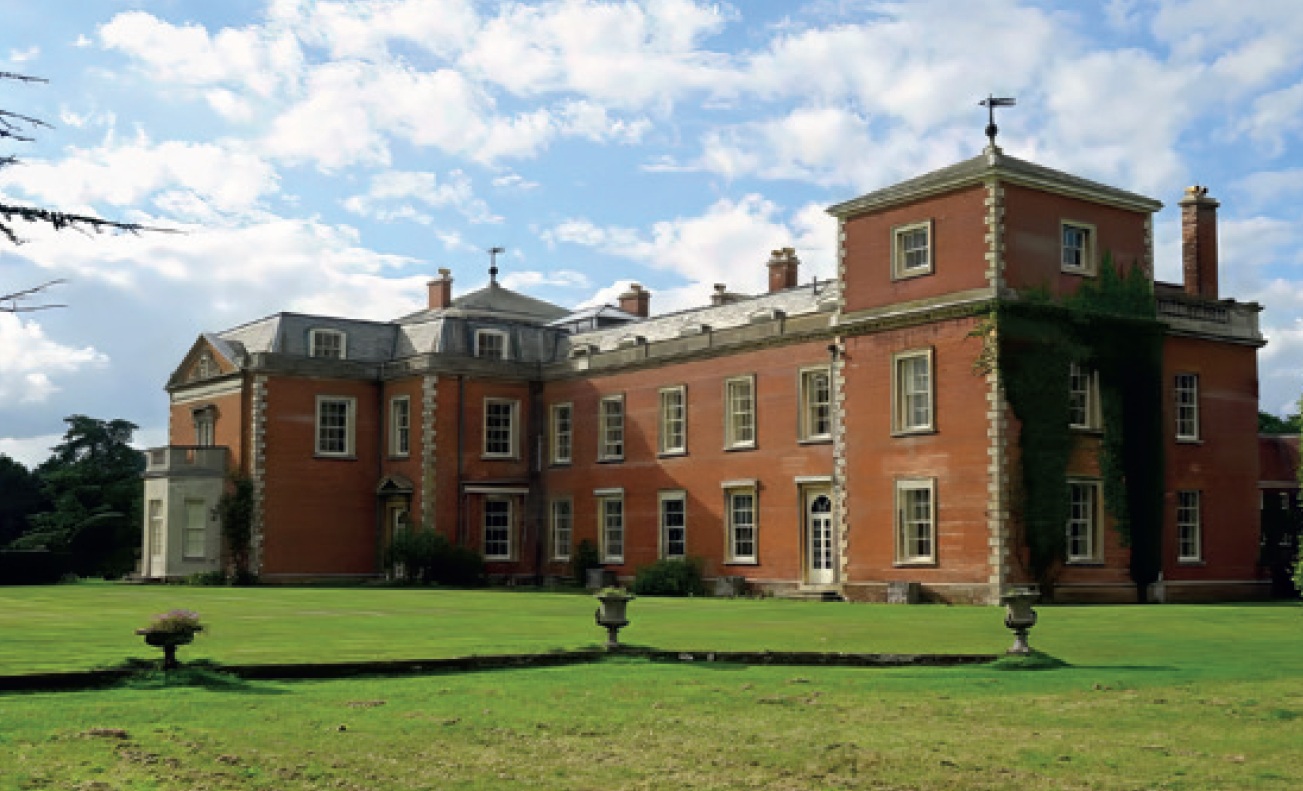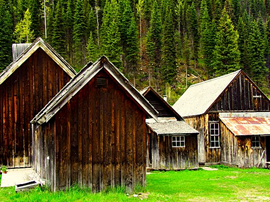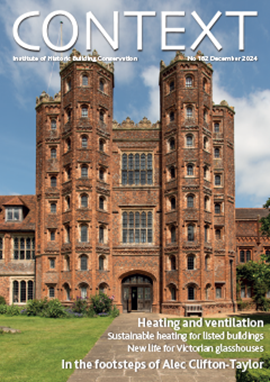Heritage management plans and historic landscapes
A heritage management plan is an essential tool in managing an historically significant landscape, defining the relationship to the house and detailing public access.

|
| Euston Hall, Suffolk, built in the 1660s around the core of an earlier house, was remodelled in the eighteenth and twentieth centuries. The house and landscape are held under a conditional exemption agreement. |
Historic Houses (the modern brand identity for the Historic Houses Association, or HHA) celebrated its half-centenary throughout 2024. The association was founded in 1973 as a pressure group to raise awareness of the threats facing privately owned historic houses and their landscapes.
From the outset, the HHA was as interested in the protection of historic landscapes as it was in the conservation of buildings. The organisation’s constitution defined it as being ‘an association of owners and guardians of historic houses, parks and gardens and places of historic interest in the United Kingdom’. Arguably, the association should have been named the Historic Houses, Parks and Gardens Association, but, in the end, any reference to landscapes was omitted from the title.
By way of making amends, the association established a Gardens Committee in 1976 to discuss concerns relating to the wider landscapes within which houses sat. The first chair of this committee was Lawrence Banks, the owner of Hergest Croft in Herefordshire and a future treasurer of the Royal Horticultural Society (RHS). His wife, Elizabeth, a landscape designer by profession, would go on to become the first woman to be president of the RHS.
The early HHA was keen to emphasise that the heritage it was seeking to preserve was to be found in the ensemble of a building, its collection and its wider landscape, and not any one of these elements in isolation. In some ways the threats facing historic house landscapes in the 1970s were just as significant as those facing the buildings, if not more so. It was no coincidence, therefore, that the famous V&A exhibition of 1974, The Destruction of the Country House, was followed five years later by another blockbuster V&A show, The Garden: a celebration of 1,000 years of British gardening.
Threats to these cherished landscapes might come from transport infrastructure, as when the M25 was proposed to slice through the parkland surrounding Copped Hall in Essex, or when a motorway spur threatened the grounds of Levens Hall in Cumbria. Or the dangers might be more insidious, such as those relating to the dramatic fall in the number of gardening staff available for attending historic planting schemes. Not untypical was the example of the head gardener interviewed by John Cornforth when he was researching his 1974 study on the state of Britain’s country houses. Where the head gardener had begun his career in a team of 25 gardeners, he was now in a team of just three.
The importance of the landscape settings of historic houses was eventually recognised through the fiscal changes of the mid-1970s. The incoming Labour administration faced intense lobbying from the HHA and others, to ease the tax burdens facing the owners of this kind of heritage. The law was changed to enable the conditional exemption of houses, as well as landscapes, against capital transfer tax (the new name for estate duty). Previously, such exemptions had only been available for artworks. Now it was possible to exempt a house against a capital tax charge on death, provided that this heritage was opened to public access for a certain minimum period every year. Lobbying from the early HHA, among others, ensured that this exemption was later made available for historic parks and gardens, too.
This conditional exemption option has arguably saved around 300 houses from being separated from their landscapes and from being sold for development or for being repurposed into other uses. The other necessity was a commitment from the owner to ensure that this heritage was being properly maintained and managed.
This has given rise to the requirement for heritage management plans (HMPs) for those parks and gardens that now fall under the terms of conditional exemption. An HMP provides a statement of the significance of a landscape and its relationship to the house. Such plans also detail the public access that is to be offered at the site, usually a minimum of 28 days, but also including an insistence on a certain number of weekends and bank holidays across the months from spring and summer to early autumn.
Importantly, an HMP that is written specifically for conditional exemption shows how an owner will maintain and preserve the heritage property in the condition that helped it to be granted its tax-exempt status. A baseline survey of condition is the most important part of the heritage maintenance plan, the most time-consuming for professionals and the most expensive element. It is a snapshot in time and a basis for monitoring that the buildings and landscapes are being conserved into the future in at least the same condition. Today, Historic Houses advises its member places that this baseline survey may identify certain repairs and maintenance that need attention, but those should ideally exclude any items that should be considered enhancement, rather than simply maintenance or preservation.
HMPs have proved to be an essential tool in the conservation of these kinds of landscapes. Owners often find that the process of identifying what is significant about a landscape is the first step in determining a strategic plan for its management. The official guidance for HMPs makes clear that the intention is not to create museum pieces, but rather to ensure that any changes (such as in vegetation cover and management) are in keeping with the significance of the site. Historic Houses advises its member properties to aim for broad and generic plans rather than unrealistic targets set against an overly ambitious timetable.
The official guidance on HMPs refers to the cost of producing these plans as being typically in the range of £6,000 to £16,000. This range now needs to be updated. Historic Houses member properties have reported that they have incurred costs up to three times higher than this. Natural England offers discretionary grant funding of up to 50 per cent of the eligible cost of preparing a HMP for land of outstanding scenic, historic or scientific interest in England. But such funding is capped subject to budget availability and it excludes the historic house.
The other issue facing many owners of Historic Houses within the conditional exemption regime relates to ‘double funding’. Where an owner is under an obligation in the HMP in return for an exemption from capital taxation, they may find it difficult or even impossible to secure other sources of funding to deliver the same outcome; for example, agricultural subsidies available for the delivery of beneficial environmental outcomes. This is because grant-giving agencies perceive that the conditional exemption is already an allocation of public funds by virtue of having a tax demand waived.
The problem is that this makes the achievement of the outcome even harder for the owner. Or, where land is under tenancy, the rule could prevent a tenant from securing essential subsidies to achieve public outcomes, despite not having benefited from the original exemption. The perverse consequence of this is that it can become a disincentive to invest in conservation work, where grant-funded support is often essential.
Nevertheless, HMPs have become essential tools in the management of historically significant landscapes. Historic Houses commends their use, where the initial cost can be managed and where the plans set out realistic programmes of work that honour the ‘spirit of place’ that resides within an historic landscape.
This article originally appeared in the Institute of Historic Building Conservation’s (IHBC’s) Context 180, published in June 2024. It was written by Ben Cowell is director general of Historic Houses.
--Institute of Historic Building Conservation
Related articles on Designing Buildings Conservation.
- Bletchley Park restoration.
- Conservation.
- Heritage.
- Historic environment.
- How new technologies can extend the lifetimes of heritage structures.
- IHBC articles.
- Institute of Historic Building Conservation.
- The growth in heritage tourism.
- VAT Policy for historic buildings part 2.
- VAT Policy for historic buildings.
IHBC NewsBlog
SAVE celebrates 50 years of campaigning 1975-2025
SAVE Britain’s Heritage has announced events across the country to celebrate bringing new life to remarkable buildings.
IHBC Annual School 2025 - Shrewsbury 12-14 June
Themed Heritage in Context – Value: Plan: Change, join in-person or online.
200th Anniversary Celebration of the Modern Railway Planned
The Stockton & Darlington Railway opened on September 27, 1825.
Competence Framework Launched for Sustainability in the Built Environment
The Construction Industry Council (CIC) and the Edge have jointly published the framework.
Historic England Launches Wellbeing Strategy for Heritage
Whether through visiting, volunteering, learning or creative practice, engaging with heritage can strengthen confidence, resilience, hope and social connections.
National Trust for Canada’s Review of 2024
Great Saves & Worst Losses Highlighted
IHBC's SelfStarter Website Undergoes Refresh
New updates and resources for emerging conservation professionals.
‘Behind the Scenes’ podcast on St. Pauls Cathedral Published
Experience the inside track on one of the world’s best known places of worship and visitor attractions.
National Audit Office (NAO) says Government building maintenance backlog is at least £49 billion
The public spending watchdog will need to consider the best way to manage its assets to bring property condition to a satisfactory level.
IHBC Publishes C182 focused on Heating and Ventilation
The latest issue of Context explores sustainable heating for listed buildings and more.
















